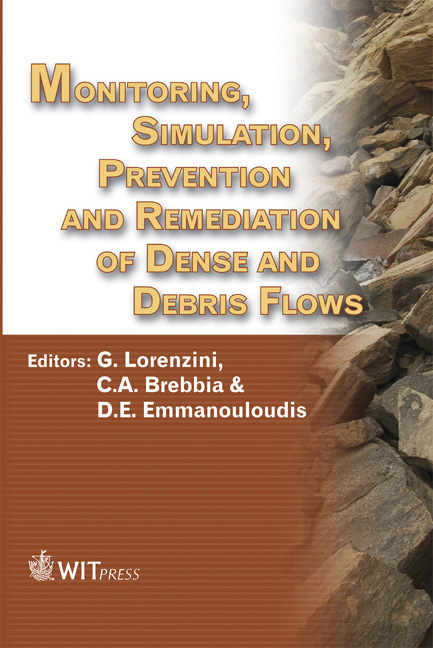The Matata Debris Flows, 18 May 2005
Price
Free (open access)
Transaction
Volume
90
Pages
8
Published
2006
Size
833 kb
Paper DOI
10.2495/DEB060351
Copyright
WIT Press
Author(s)
T. Bassett
Abstract
In May 2005 the eastern Bay of Plenty, North Island, New Zealand community of Matata was hit by intense heavy rain that caused debris flows that cut major transport links, destroyed homes and caused over $ 20 m (€ 11.3 m) of damage. In close consultation with the local community the local Whakatane District Council organised the disaster recovery process and co-ordinated various investigations necessary to determine appropriate future hazard management and risk mitigation strategies to protect lives and property. Three months after the storm the Council adopted a strategy that included for various structural and non-structural risk mitigation measures, with a total cost of $ 19.8 m (€ 11.2 m). Keywords: extreme rainfall, debris flows, New Zealand, hazard management, risk mitigation. 1 Introduction On 18 May 2005 a band of intense rain passed over the hills behind Matata, a residential town in the Bay of Plenty, on the east coast of the North Island of New Zealand. The storm triggered debris avalanches on the steep catchment slopes, which in turn set in motion debris flows along the stream valleys. The debris flows and floods were delivered on to the fanhead on which the town has been developed, flowing across a railway line and a state highway into residential properties. The railway and highway links were severed, with restricted heavy vehicle use of the highway allowed after a week. Numerous dwellings were destroyed and a large amount of debris spread though parts of the town and into lagoons downstream on the coastal fringe. Remarkably there were no fatalities, nor even serious injuries. In the town and its near vicinity it is estimated that the total value of damage in terms of immediate disaster recovery activities, insurance claims, lost
Keywords
extreme rainfall, debris flows, New Zealand, hazard management, risk mitigation.





